It takes a long time to become young.
—Pablo Picasso
Confucius is said to have once said, “It doesn’t matter how slowly you go as long as you don’t stop.” Having bounced around on chariots and ox carts for most of his life, the old pontificator had little chance to see the crater-sized hole in his popular maxim’s logic. Had he ever driven a car or truck, though—especially west on Interstate 94 across North Dakota and eastern Montana—he’d have rethought it. Probably would’ve ordered one of his scribes to grab a sharp bone stylus and scratch that one off the bamboo writing pad. Redlining lines like that was the sort of thing he was proud of, when he caught them.
You see, it does matter how slowly you go across those plains. Out there, you want to measure speed in Machs, not miles per hour. And stops are okay—required, really—especially when one of your tanks gets full or the other runs close to empty. A recycled wide-mouth Tropicana bottle might solve the first crisis, but only if you travel alone. Even then, it’s sloppy, dangerous, and better to just stop. Making good time isn’t worth staining your upholstery or risking an abrupt swerve at eighty-five, just to wind up a homicide victim in some Great Plains version of A Good Man Is Hard to Find.
I’m sure they exist, but I’ve yet to meet anyone who drives this stretch of highway for the sake of driving this stretch of highway. You know, not like the Blue Ridge Parkway from Boone to Asheville, or the Pacific Coast Highway from Big Sur to Monterey. For me, as it was for haggard old Zeke, Cy, Temperance, and Lottie on the Oregon Trail, it’s not about the journey. It’s about the destination, and my destination is a triangle with vertices in the Montana towns of Craig, Whitefish, and Livingston.
Still, exiting the interstate at Glendive to wind northwest on a rolling two-lane highway—then west through Grass Range, Lewistown, and Great Falls—feels less like efficient routing and more like Google’s way of saying, “Hey, hold my beer and watch this.” All confirmed by a seemingly unending chain of signs warning Rough narrow road next 30 miles. Yet, according to the miniature abacus the wizards embed into every phone, it’s at least forty minutes quicker than all other ways. But forty minutes quicker in this part of Montana still pins your rear to the seat for over six hours, not counting stops.
I arrive in Craig a day before any of my accomplices, and begin doing the thing I’ve driven here to do. I want to cast tiny flies to tiny dimples on the river’s surface—elegant and athletic like Jason Borger shadow casting for Brad Pitt in The Movie. But the wind is beating the river like a pep-band drummer, and all the mayflies in Lewis and Clark County are grounded like commercial airliners in a hurricane. My only hope—and this is not merely a rationalization—is to attach a fly with a tungsten bead and let the predictable yet inexplicable force of gravity bring it to the fish. It’s mid-April, and back in Michigan, over two feet of snow still covers our yard. So, frankly, at this point, I’d use dough balls on treble hooks if Montana Fish, Wildlife & Parks allowed it. Well, maybe not, but you get the idea. I’m like a leprechaun crawling from a hollow tree after a five-month bender. If I have to trespass to get to that damn rainbow, then so be it.
Later that night, the first of my conspirators arrives. A day later, another. And a day after that, one more. Three anglers ranging from a relative newcomer with all the enthusiasm of a nine-month-old Labrador retriever, to two of Montana’s fly-fishing maestros. One from Bigfork; another from Livingston. But the wind is unimpressed and neither curtsies nor tips its hat to our entourage. Evidently, the only things nature abhors more than a vacuum are tight loops, accurate casts, and drag-free drifts.
Over dinner one night, the rest of the crew points out that at sixty-three, I’m the youngest on the roster. A relative baby, perhaps. But when your junior member is two years out from Medicare, it’s prudent to make a wellness check if anyone’s more than ten minutes late for breakfast. Yet out on the river, our melanin-starved hair and clip-on magnifiers are all that separates us from a gang of middle-schoolers recessing on the playground. One of us lifts a line, the rod bends, and a rainbow arcs through the sky, confirming we’ve beaten time and, at least for this one day, found our pot of gold.
Lately, though, I’ve been feeling old. Hell, I just bought a pair of zip-up waders because getting both legs into and out of the normal ones has become a task on par with Houdini breaking seven locks and emerging from a Chinese Water Torture Cell. But after a few days on this Montana river—especially having endured a winter that would have had Sir Edmund Hillary pleading, “Enough!”—I strut like Ponce de León on his second ladle of tonic from that long-lost fountain.
I stay one night after the three amigos leave, and wake the next morning to a few inches of snow on the Suburban. I’ve driven twelve hundred miles to get away from this stuff, but evidently, Montana isn’t the temperate zone I’d have basked in if I had steered south to, say, Atlanta. But I couldn’t get a bacon, egg, and cheese sandwich from The Trout Shop if I were there, and I certainly couldn’t eat it beside the Missouri River. And without those things, I wouldn’t notice swallows gliding through a windless sky, dive bombing midges like tiny Messerschmitts and signaling to the bench for size 20 dry flies on twelve-foot leaders with 6X tippets. I don’t need to be in Whitefish until dinnertime. So I take one more swig from the fountain—this time with René Harrop’s hanging black midges and Charlie Craven’s mole flies at the end of my line.
Dry fly fishing often makes you feel like Charlie Brown, with all the other things—your rod, reel, line, fly, current, sun, wind, and especially the fish—playing the role of Lucy, pulling the ball away just as you plant your foot for the kick, provoking you to say, “Good grief,” or “To hell with that pot of gold,” depending on where your mind is at the time. But on other days, when the clouds veil the sun and the breeze is softer than a baby’s breath, you are Shakespeare’s Pistol and the world is your oyster. Which you, with rod, do open. With every rise and take, you spin the crown and move the hands back a year or two or three or ten, to where you believe they belong. Time might win the match, but that doesn’t mean you can’t win a few of the games.
I savor my victory with one of Minnesota’s finest contributions to the well-being of anglers everywhere—a one-pound Honeycrisp apple. When it’s time to go, the Google sorcery tells me to drive west, then north by Seeley and Swan Lakes, and on up to Whitefish. But the Bigfork maestro warned I’d run a gauntlet of four-legged obstacles like deer, antelope, and packrats if I took that route in the early evening. Better to drive north, then west through Glacier National Park. So I do, and once I turn left onto U.S. 2 in Browning, I share the park’s mountain passes with the Hi-Line of the Burlington Northern Santa Fe Railway—where, in a few hours, an Amtrak will rumble west with a cargo of octogenarians, septuagenarians, and a few sexagenarians like me, all heading to Whitefish for the Stumptown sixty-plus hockey mash-up.
I almost quit playing hockey this year. My knee suggested it first. Quietly and politely to start, but then it got downright belligerent about it. Snapped, crackled, and popped like a Kellogg’s breakfast cereal. Next, my back piped up. Even the mirror chimed in, staring me down with a conglomeration of wrinkles and misplaced hairs more representative of a character in Cocoon than one in Slap Shot. Although Wilford Brimley was only fifty in Cocoon, and Paul Newman fifty-two in Slap Shot, so I’m not sure what age even means anymore.
As my troops depart the train at the Whitefish depot—led by a fabled goalie who wears a helmet only because the insurance policies of all the rinks require one—they could have—no, should have—marched beside a color bearer hoisting a flag proclaiming George Bernard Shaw’s mantra, We don’t stop playing because we grow old; we grow old because we stop playing. When Mick Jagger and Keith Richards wrote “Time Waits for No One,” they clearly hadn’t seen this crew exit a train. Or, come to think of it, they hadn’t seen the modern-day Mick and Keith strut across a stage, either.
Five teams total—two from Michigan and three from Montana—many with enough titanium and cobalt-chromium alloys in their joints to set off every security scanner west of the Mississippi. But on the ice, we’re just a bunch of preteens playing pond hockey with our friends until Mom tells us to come in, wash our hands, and eat dinner. Or, in our case, gather in the parking lot for burgers, brats, and beers, where the only snow is atop the overlooking mountains, just like it’s supposed to be. Not in the yards. At least not at this time of year.
I recently wrapped up a library tour for my book about fly fishing in Montana. A few folks asked, “How come you didn’t write about eating those trout alongside the river?”—which, of course, brought us perilously close to the pesky question every catch-and-release angler—even those who sometimes kill—should be prepared to answer. Why? Why catch a fish we don’t intend to keep, only to disrupt its day, return it to the river, and gift it an elevated chance of ruin and, perhaps, a figurative fist bump like a victorious boxer saluting the loser? There are plenty of answers ranging from half-truths to lies. For me, though, perhaps chasing fish and pucks are two of the best ways I know to feel young—especially after washing down my daily dose of Losartan, Omeprazole, and super-beet gummies.
Outside of fruitcakes, road tar, and fluorocarbon tippet, nothing lasts forever. It’s a long, hard drive from Whitefish back to Michigan. The Google navigator recommends U.S. 2 to Wolf Point, then south to Glendive, and back east on Confucius’s favorite stretch of Interstate 94. But there are eight rods open on DePuy Spring Creek down in Livingston tomorrow, and the GPS says I can be there in a little over five hours. And, hell, there’s a room available for under sixty bucks at the Super 8. The Livingston maestro says we can get dinner together tonight. He can’t join me on the river tomorrow, but he’ll gladly do some tutoring over drinks. And if the sun and the wind cooperate, tomorrow should be a fine day to hook up with a rainbow or two. Even—he says—for a young man like me. Which is good, because it’s taken a long time to get here.
Here’s to tomorrow.





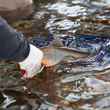


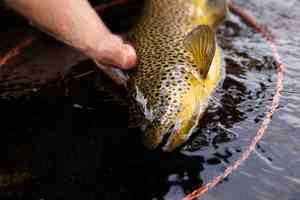

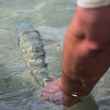


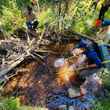



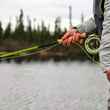

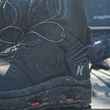
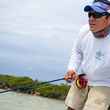
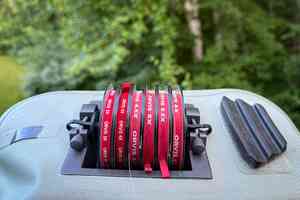
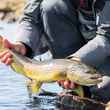
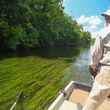
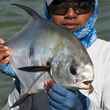
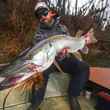
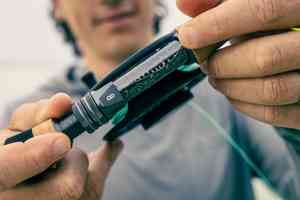
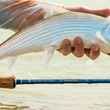

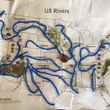

Comments
Anonymous replied on Permalink
Here's to tomorrow indeed. About 30 years ago, my best fishing friend and I starting saying to each other, "We've got to enjoy this while we can, because we've probably got only got 30 more summers to do it." 30 More Summers became like a mantra to us. Now those 30 summers are gone, and we're still on the water—hopefully for quite a bit longer, but we do cherish all our tomorrows.
Pages